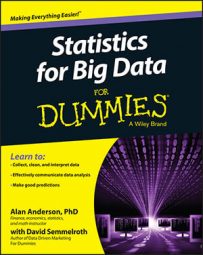Weather forecasting has always been extremely challenging, given the number of variables involved and the complex interactions between those variables. Dramatic increases in the ability to gather and process data have greatly enhanced the ability of weather forecasters to pinpoint the timing and severity of hurricanes, floods, snowstorms, and other weather events.
One example of an application of big data to weather forecasting is IBM's Deep Thunder. Unlike many weather forecasting systems, which give general information about a broad geographical region, Deep Thunder provides forecasts for extremely specific locations, such as a single airport, so that local authorities can get critically important information in real time. Here are some examples of the information that Deep Thunder can provide:
Estimates of areas where flooding is likely to be most severe
The strength and direction of tropical storms
The most likely amount of snow or rain that will fall in a specific area
The most likely locations of downed power lines
Estimates of areas where wind speeds are likely to be greatest
The locations where bridges and roads most likely to be damaged by storms
The likelihood of flights being cancelled at specific airports
This information is essential for emergency planning. Using big data, local authorities can better anticipate problems caused by weather before they occur. For example, planners can make preparations to evacuate low-lying areas that are likely to be flooded. It's also possible to make plans to upgrade existing facilities. (For example, power lines that are prone to being disabled by heavy winds can be upgraded.)
One important customer of Deep Thunder is the city of Rio de Janeiro, Brazil, which will be using the system in planning for the 2016 Olympics. Using the technology, the city will make use of improved forecasts for storms, floods, and other natural disasters in order to ensure that the Olympics won't be disrupted by such events.
IBM is also providing massive computing power to the Korean Meteorological Administration (KMA) to fully embrace big data technology. The KMA gathers over 1.5 terabytes of meteorological data each day, which requires a staggering amount of storage and processing power to analyze. By using big data, the KMA will be able to improve its forecasts regarding the strength and location of tropical storms and other weather systems.
A terabyte is equal to one trillion bytes. That's 1,000,000,000,000 bytes of information. You'd write one trillion bytes in scientific notation as 1.0 x 1012. To put that in perspective, you would need around 1,500 CDs to store a single terabyte. Including their plastic cases, that would stack up as a 40-foot tall tower of CDs.
Another example of using big data in weather forecasting took place during Hurricane Sandy in 2012 — the "storm of the century." The National Hurricane Center was able to use big data technology to predict the hurricane's landfall to within 30 miles a full five days in advance. That is a dramatic increase in accuracy from what was possible even 20 years ago. As a result, FEMA and other disaster management organizations were far better prepared to deal with the mess than they might have been had it occurred in the 1990s or earlier.
One of the interesting consequences of gathering and processing more weather data is the appearance of corporations that sell customized insurance to protect against weather damage. One example is the Climate Corporation, which was formed in 2006 by two former employees of Google. The Climate Corporation sells weather-forecasting services and specialized insurance to farmers seeking to hedge the risk of crop damage. The company uses big data to pinpoint the types of risks that are relevant to a specific area, based on massive amounts of data on moisture, soil type, past crop yields, and so on.
Farming is an exceptionally risky business, because the variable of weather is far less predictable than the variables that affect most other businesses, such as interest rates, the state of the economy, and so forth. Although farm insurance is available from the federal government, in many cases it isn't sufficient to meet the more specialized types of risks that plague individual famers. The Climate Corporation fills gaps in federal insurance — gaps that would be impossible to offer without an improved understanding of the risk factors facing individual farmers. In the future, as more data becomes available, even more specialized insurance products (such as insurance for specific crops) may become available.

